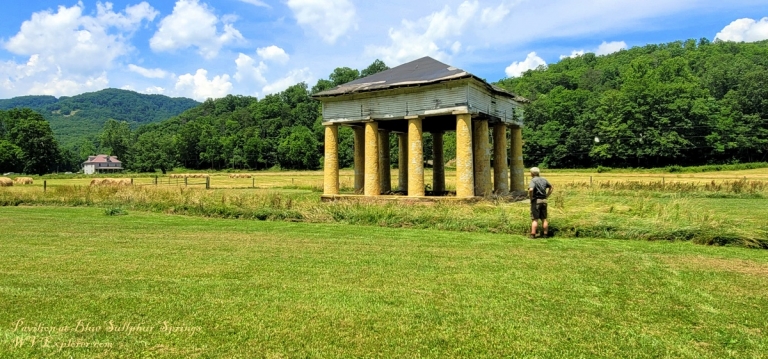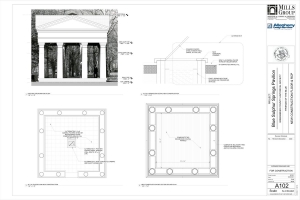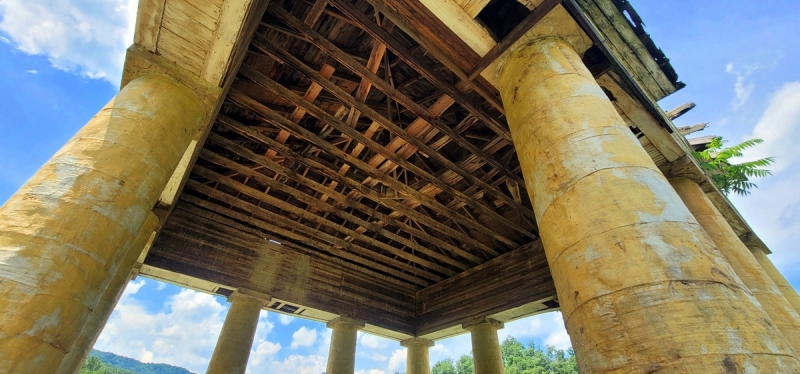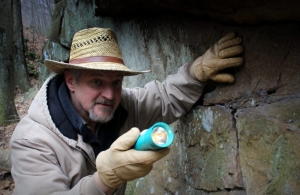
One of the state's most evocative historic landmarks, the pavilion at Blue Sulphur Springs could be restored to its original appearance by 2023 and could be open to visitors soon, according to a spokesperson for the Greenbrier Historical Society, which has spearheaded its restoration.
"Within three years, we hope," Margaret Hambrick said of the restoration, which has excited historians and history buffs far and wide. The 2023 completion would coincide with the tenth anniversary of the gift of the pavilion to the society, Hambrick said.
"I cannot give you anything firm on the public opening for the pavilion. We are in process with a contract we hope will work out, but we do not know for certain."

Built in 1834, the classical spring house is all that remains of an antebellum resort, the remainder of which was burned by the U.S. Army during the Civil War. After being added to the National Register of Historic Places in 1992, it was identified in 2013 by the Preservation Alliance of West Virginia as one of the most endangered historic resources in the state.
During the years the resort occupied the property, the pavilion was a gathering place for activities and received visits from many VIPs seeking the health benefits of the water. It was built in a Greek Revival style and is not a common sight to see in West Virginia—particularly in a rural area.
According to Hambrick, the pavilion has a storied history. When the resort began to decline in the late 1850s, finally closing its doors in 1859, it became a school for Baptist ministers. War would find the resort buildings occupied at one time or another by both sides.

The pavilion survived two intentional fires. The first, in 1860, was during the school’s occupation. The second, in 1864, was set when the U.S. Army burned most of the buildings to prevent the Confederacy from using the buildings again
It was the only structure to survive the second fire and no traces of fire can be found on or in the pavilion.
The pavilion is built on a brick foundation with twelve columns that give it an open structure. The final part of the restoration will see the removal of the old roof, restoring the columns to their original height, and finally installing a tile floor.

Within the pavilion, the sulfurous water bubbles into a basin at a rate of six gallons per minute and at a temperature of 58 degrees Fahrenheit.
Hambrick also said that an archaeologist has been present whenever the ground is being moved in case of any discoveries, though only bits of pottery and a button have been discovered.
Hambrick said the society plans to have a celebration to show off the renovations as well as thank donors and the chief benefactor, Rebecca Lineberry, who donated the pavilion and surrounding property.
In his 1846 book on mineral springs, William Burke described the pavilion as “well-designed but badly executed" and referred to the fountain inside as "one of the most beautiful objects imaginable."
Geologic mystery in Monroe County visible only from the air

Unknown to many residents of the Greenbrier Valley in southern West Virginia, a six-mile crack in the surface of the earth has been hiding beneath their feet. Visible only from the air, the "Monitor Lineament" is one of the strangest landforms in this scenic landscape of bluegrass pastures, vanishing brooks, and healing springs. Coursing in a straight line across northern Monroe County from near Sinks Grove to Second Creek, the lineament is seemingly impossible to perceive at eye level. READ THE FULL STORY HERE.






























